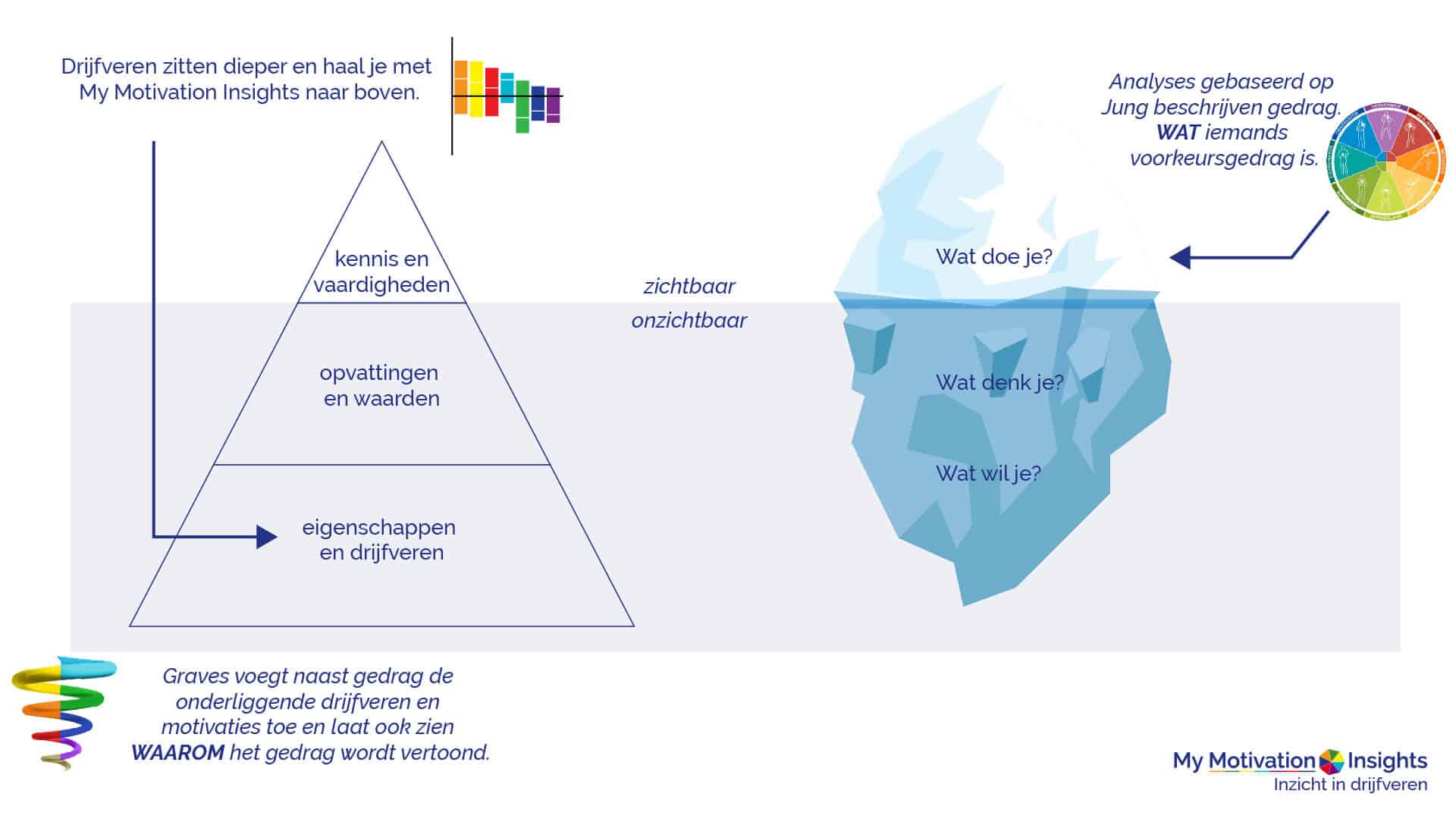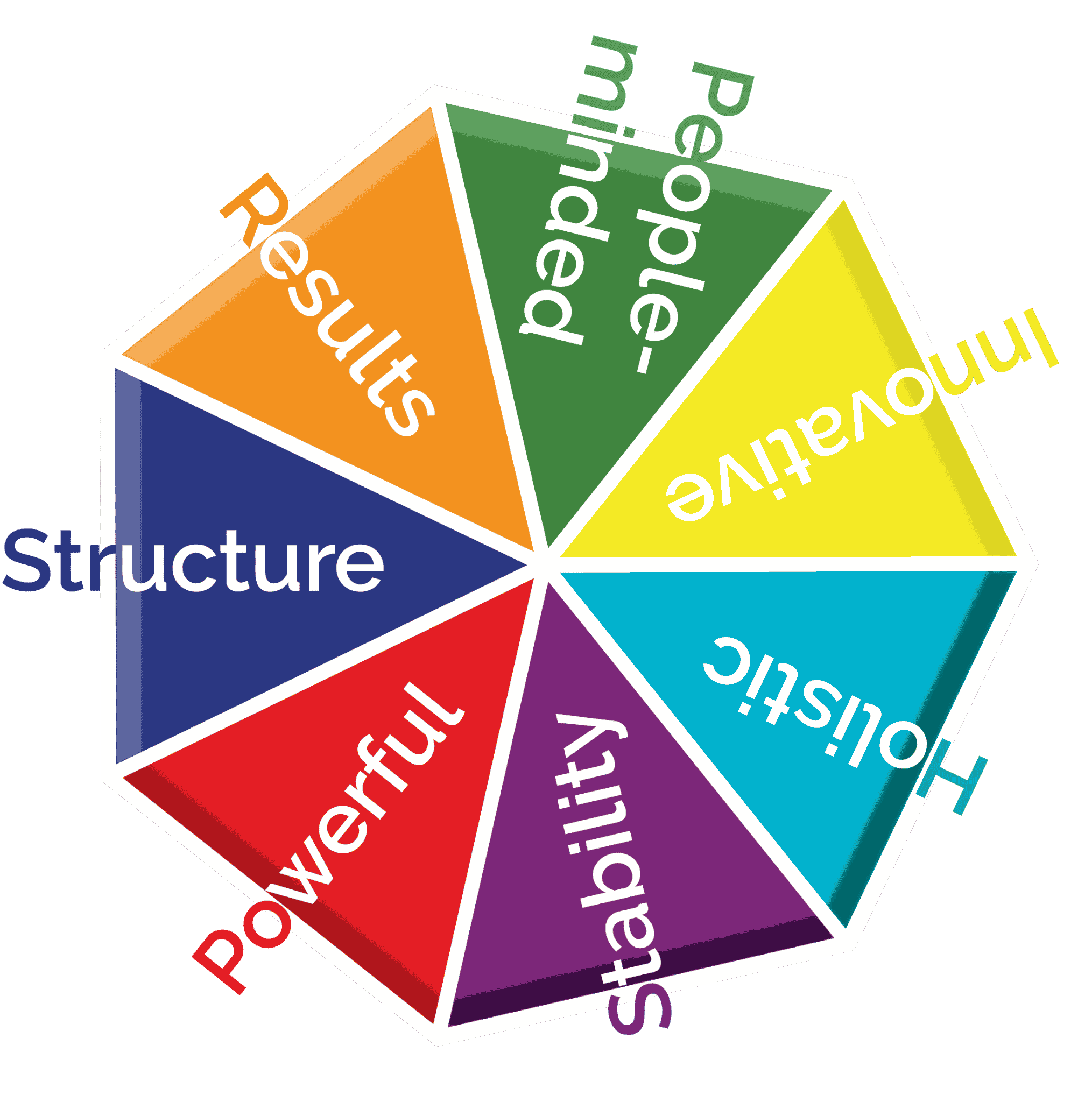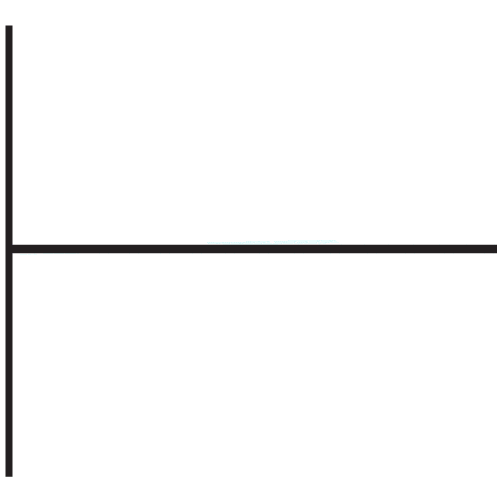Differences and similarities
Between the colours
Each colour has a different explanation. In terms of meaning, blue and green stand for almost the same in the theories of Graves and Jung. This is much less true for yellow, orange and red: Graves’ orange motive partly overlaps with Jung’s red and yellow, but adds new elements. This orange driver stands for result-oriented, ambitious and efficient.
Finally, Graves adds a colour to the palette, namely the colour Turquoise, the value system that stands for meaning and relevance. This is seen as the colour of today, with themes such as social responsibility and sustainability. Not all Graves-based colour methods measure this Turquoise drive.


